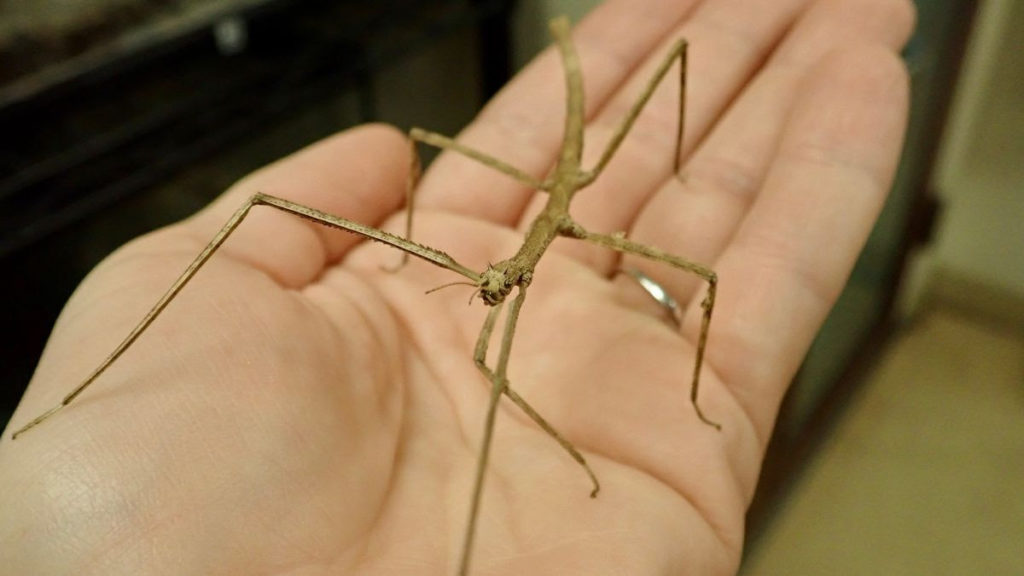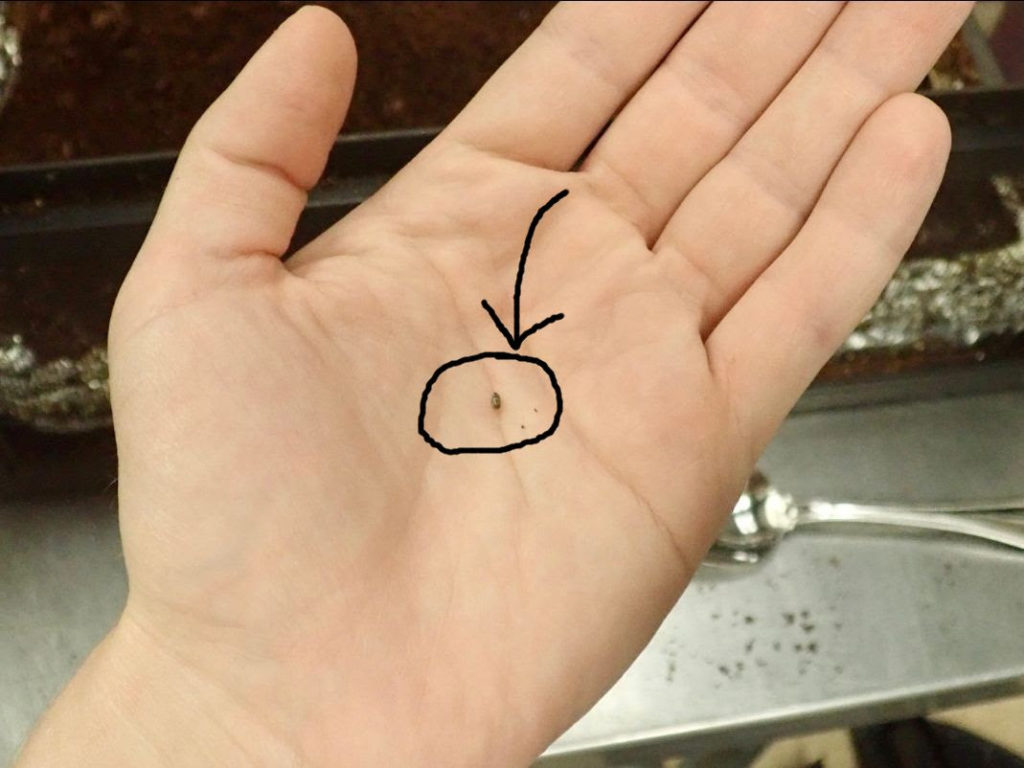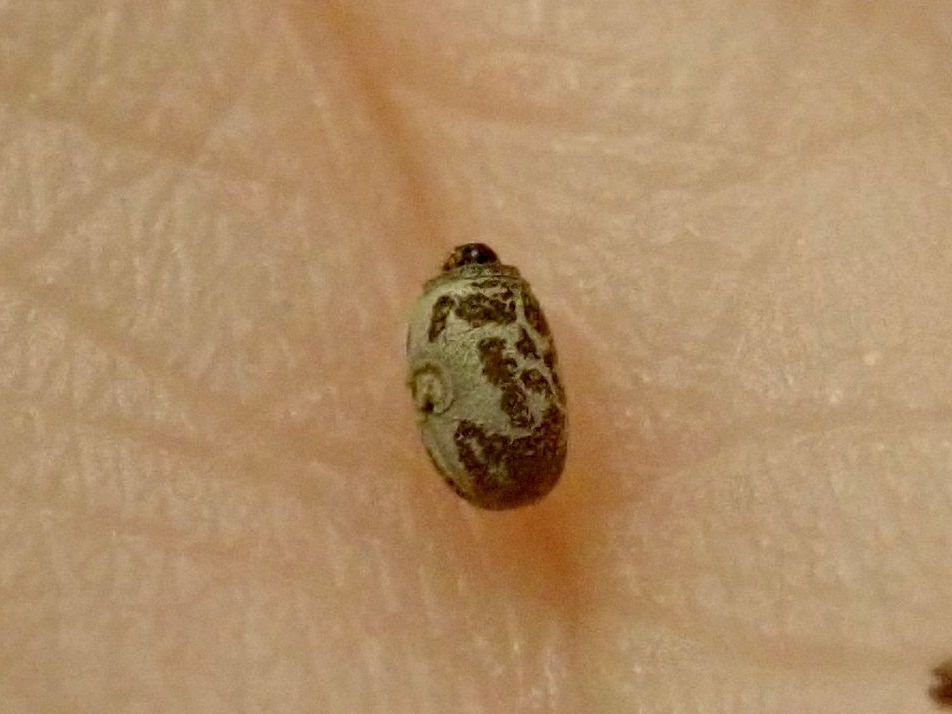Welcome back to the Lab!
Keeping in theme with our classroom pets and European mantis issues, it’s time to take a look at an insect that should never, under any circumstances, be released into the wild. Their status as an invasive pest is so rigidly defined that they cannot even be kept as household pets; they require special permits to transport and house. And if you’re picturing a voracious predator or some kind of giant locust, you’ll be surprised to learn that the greatest threat to our native plants and ecosystem is the unassuming walking stick.
Medauroidea extradentata. You know them, you love them. Chances are, if you’ve spent any time with us, you’ve held them. The Vietnamese Walking Stick is one of our more popular Bug Ambassadors and is a regular at our encounter cart.

If you are familiar with Latin, you’ll notice the species name, extradentata, means extra teeth. A daunting prospect, but only if you’re a leaf. These insects are herbivores, with a voracious appetite to boot. Their “extra teeth” refer to the palp-like extensions near their mouth which are used to manipulate leaves.
Many people are shocked to learn that most of our permitted species are herbivores, and the Vietnamese Walking Stick is a perfect example of why. Medauroidea extradentata reproduce parthenogenically, meaning they clone themselves. In fact, males are so rare that they have been bred out of most captive populations and are very rarely seen in the wild, if at all. The females simply fling their eggs onto the soil and in a few weeks, they hatch. As you can see below, the eggs are minuscule, hardly distinguishable from walking stick poop. They are the only species of animal that we do not separate the eggs and hatchlings from the adults. With dozens of adult females flinging hundreds of eggs throughout their lives, it would be nearly impossible.
Medauroidea extradentata would have an exceptionally hard time surviving in the wild in Montana – there’s no way a tropical phasmid could live through our winters – but populations survive in the wild in warmer places like southern California, and therefore the USDA requires them to be housed in a proper containment facility. Closely related species, like the Indian walking stick (Carausius morosus) are considered an invasive species in parts of the US, having established populations in San Diego and other warm climates. We’re more than happy to take the required precautions when it comes to our herbivore populations, regardless of their lack of overwintering adaptations.

Until next time, thanks for visiting the lab!
Bug Wrangler Brenna
brenna@missoulabutterflyhouse.org
Want to revisit a previous Notes from the Lab issue? Check out our archive! Do you want to request a subject for an upcoming issue? Email me at the address above and put “Notes from the Lab” in the subject line.

